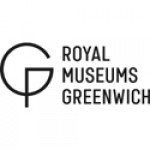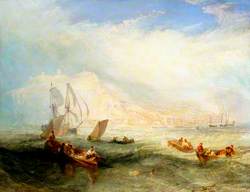How you can use this image
This image can be used for non-commercial research or private study purposes, and other UK exceptions to copyright permitted to users based in the United Kingdom under the Copyright, Designs and Patents Act 1988, as amended and revised. Any other type of use will need to be cleared with the rights holder(s).
Review the copyright credit lines that are located underneath the image, as these indicate who manages the copyright (©) within the artwork, and the photographic rights within the image.
The collection that owns the artwork may have more information on their own website about permitted uses and image licensing options.
Review our guidance pages which explain how you can reuse images, how to credit an image and how to find images in the public domain or with a Creative Commons licence available.
Notes
Add or edit a note on this artwork that only you can see. You can find notes again by going to the ‘Notes’ section of your account.
This is Turner’s only work by ‘royal command’ and the largest and most publicly controversial painting of his career. George IV gave him the commission late in 1822 on the advice of Sir Thomas Lawrence, President of the Royal Academy. It was to form a naval pair with Philippe-Jacques de Loutherbourg’s 1795 view of The Battle of the Glorious First of June 1794, in a patriotic post-war redecoration of the State Rooms at St James’s Palace. Turner did an unusual amount of practical research for this work, his most complex tribute to Nelson, of whom he was a great admirer. The finished work combines a number of incidents from different times in the action, within a more symbolic conception. Nelson’s presence, mortally wounded, is only implied in the highlighted crowd around 'Victory’'s mainmast.
In 'The Harbours of England' Ruskin grasped this elemental component when he likened the uncontrollability of the ship’s sails, as Turner shows them, to ‘as many thunderclouds’, most of 'Victory’'s falling with her foremast and at the same time as Nelson. Also symbolically, the falling mast bears his white vice-admiral’s flag, while the code flags spelling ‘d-u-t-y’ – both the last word of his famous Trafalgar signal and the last coherent thought he spoke (‘Thank God I have done my duty’) – are coming down from the mainmast.
On the right is the French 'Redoutable', from which Nelson was shot, surrendered and sinking, although she in fact went down in the storm after the battle. Below the surface loom fragments of Nelson’s motto, ‘Palmam qui meruit ferat’. This can translate as ‘Let him who has earned it bear the Palm’, or, in the circumstances, ‘the price of glory is death’.
Title
The Battle of Trafalgar, 21 October 1805
Date
1822–1824
Medium
oil on canvas
Measurements
H 261.5 x W 368.5 cm
Accession number
BHC0565
Acquisition method
National Maritime Museum (Greenwich Hospital Collection)
Work type
Painting








